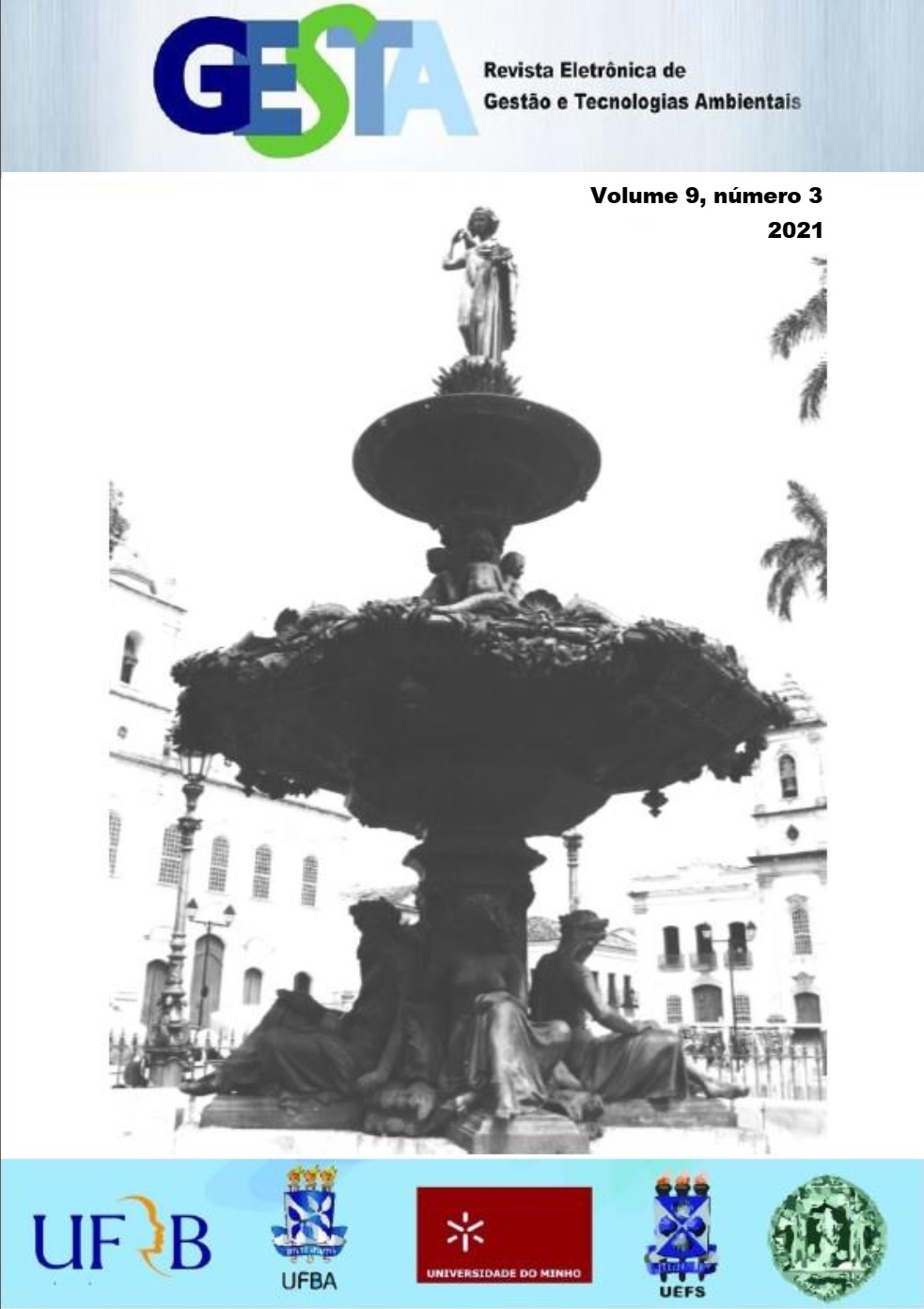PERFORMANCE OF A PILOT PLANT FOR CONDITIONING OF SEPTAGE TO BE TREATED IN A SEWAGE TREATMENT PLANT
DOI:
https://doi.org/10.9771/gesta.v9i3.42070Resumo
This work evaluated the behaviour of a Pilot Plant to receive and pre-treat septage collected and transported by trucks from decentralized sewage treatment systems and greasy residues from grease traps. This Pilot Plant was installed at the Brasília Sul Sewage Treatment Plant and was composed of a grid, equalization tank, rotating screen, crusher and a Central Unit for separating settleable solids (SetS) and floating solids, mainly oils and greases (O&G). The Central Unit consists of an adaptation of an aerated grit chamber to receive intermittent loads of septage dumped from trucks. The Central Unit was tested in four operating modes to investigate the influence of the presence of greasy residues and aeration in the initial third of the length of its chamber: Mode 1 - Central Unit without aeration and receiving only septage; Mode 2 - Central Unit with aeration and receiving only septage; Mode 3 - Central Unit without aeration and receiving mixtures of greasy residues and septage; and Mode 4 - Central Unit with aeration and receiving mixtures of greasy residues and septage. It was verified that there is a tendency of the Central Unit to behave better when receiving mixtures of septage and greasy residues. Comparing Modes 1 and 2, Mode 2 showed only 6% more O&G removal than Mode 1, on average. Comparing Modes 3 and 4, Mode 4 reached 32% more removal of O&G than Mode 3, on average. However, the use of aeration was not statistically significant. The Pilot Plant on average reduced 72% of O&G and 90% of SetS in Modes 1 and 2, and 95% of O&G and 90% of SetS in Modes 3 and 4.
Downloads
Downloads
Publicado
Como Citar
Edição
Seção
Licença
Copyright (c) 2021 Revista Eletrônica de Gestão e Tecnologias Ambientais

Este trabalho está licenciado sob uma licença Creative Commons Attribution-NonCommercial-ShareAlike 4.0 International License.
Autores que publicam nesta revista concordam com os seguintes termos:- Autores mantém os direitos autorais e concedem à revista o direito de primeira publicação, com o trabalho simultaneamente licenciado sob a Creative Commons Attribution License que permitindo o compartilhamento do trabalho com reconhecimento da autoria do trabalho e publicação inicial nesta revista.
- Autores têm autorização para assumir contratos adicionais separadamente, para distribuição não-exclusiva da versão do trabalho publicada nesta revista (ex.: publicar em repositório institucional ou como capítulo de livro), com reconhecimento de autoria e publicação inicial nesta revista.
- Autores têm permissão e são estimulados a publicar e distribuir seu trabalho online (ex.: em repositórios institucionais ou na sua página pessoal) a qualquer ponto antes ou durante o processo editorial, já que isso pode gerar alterações produtivas, bem como aumentar o impacto e a citação do trabalho publicado (Veja O Efeito do Acesso Livre).





